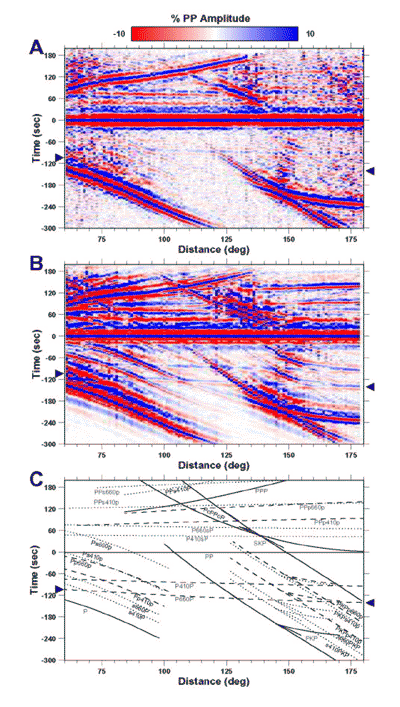The first time that I met Franz John was in Potsdam Germany in 1998. He became interested in the earth sciences and thought that he would check out the web site of the GeoForschungsZentrum in Potsdam, and he noticed that one of the scientists had a very non-German sounding name. After we met we both realized that we both were really not aware of what was going on outside of our fields of interest. I had no idea that artists were interested in any of the topics that made up my life. And was I wrong. When Franz first showed me his collection of the camera obscura photographs for “Military Eyes”, I was immediately struck with their similarity to images of the Earth’s interior obtained by passively waiting for earthquake waves to illuminate it.

Earth scientists obtain their images of the Earth primarily from seismology. Just as a light bulb illuminates all corners of a room by direct, reflected (bounced) and refracted (bent) light rays, the Earth is “illuminated” by waves that radiate from earthquakes. The image presented here shows all possible direct, reflected and refracted waves from over 7000 earthquakes recorded at over 100 stations scattered around the world. In a sense this is a camera obscura image of the Earth.
Heat from the Earth’s core and mantle, left over from the Earth’s creation over 4 billion years ago, drives the great dynamic engine. The heat is liberated by convection of the Earth’s mantle and by plumes from deep in the interior. The movement of tectonic plates at the surface is simply an expression of the heat convection: hot material rises up at the mid-ocean ridges and sinks back to the interior at subduction zones. Most earthquakes occur in the Earth’s crust (from the surface to about 30-km depth) as the result of the collision of spreading apart of the great tectonic plates that form like a jigsaw puzzle across the surface of the Earth. Roughly 25% of earthquakes occur deeper than the crust, but within subducting oceanic plates (tectonic plate collision zones). Along the west coast of South America and north of New Zealand, earthquakes occur within the subducting plates to depths of nearly 700 km. It is the deep earthquakes that are most useful for illuminating the whole Earth.
Franz John has tried to capture the dynamic Earth in his presentation Turing Tables
. Earthquakes resulting from plate tectonics appear in near real-time as points of light in the Turing Table
.
Dr. Charles Estabrook, Seismologist
CTBTO, Vienna, Austria